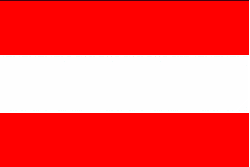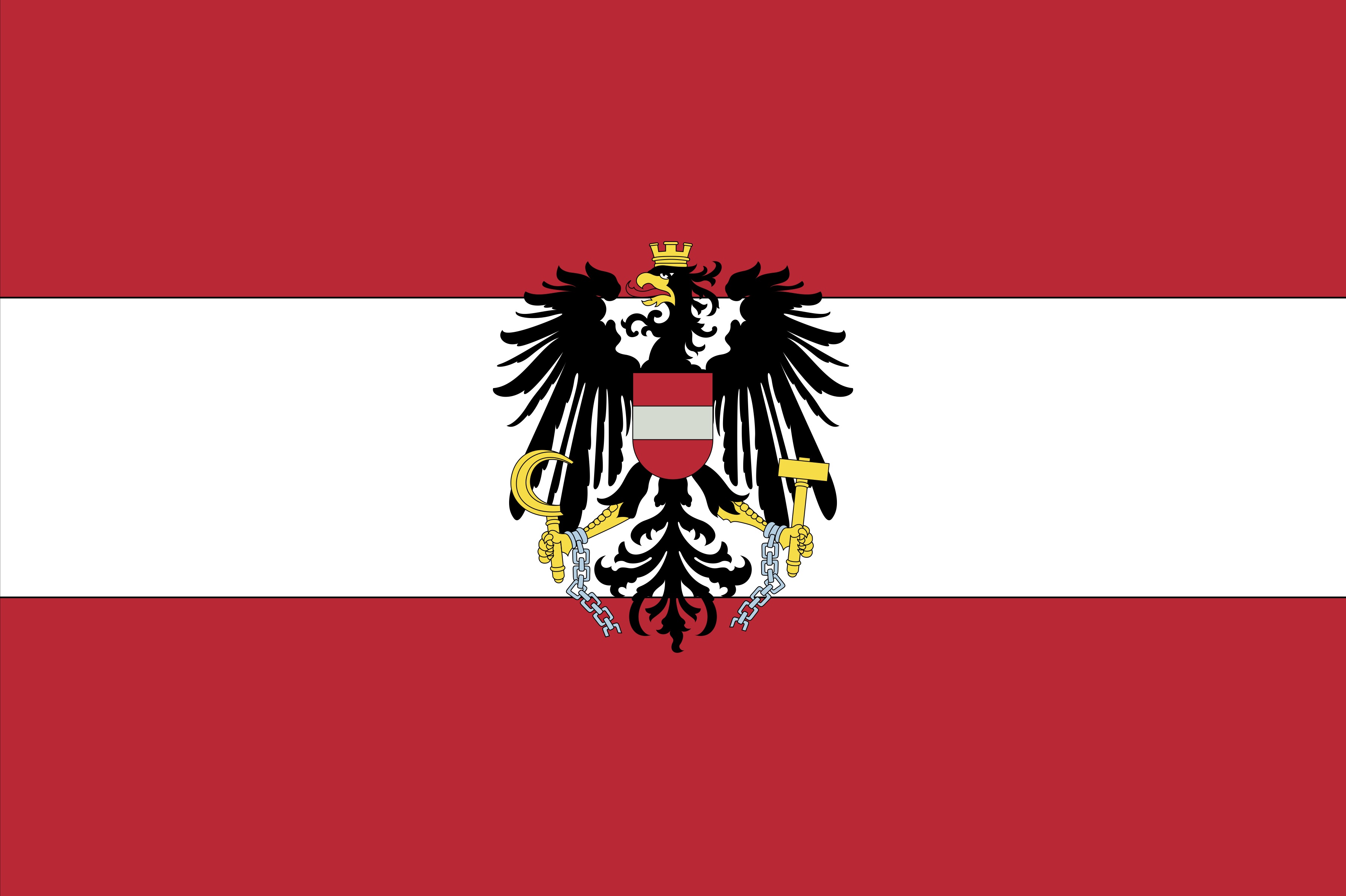The Austrian Flag

Civil Flag Ratio: 2:3

State Flag Ratio: 2:3
The Austrian Flag has three equal horizontal bands of red (top), white,
and red.
The flag was adopted by Friedrich II., der Streitbare, the last Babenberg as
Duke of Austria in the 13th century.
According to legend, Duke Leopold V. of Austria (1157-1194) was involved in a
fierce battle during the Crusades. After the battle of Acre his white
battledress was completely drenched in blood. When he removed his belt the cloth
underneath was untouched by the blood. So taken was he by the singular sight he
adopted the colours and scheme as his banner.
In reality it was Duke Frederick II. of Austria (1210-1246) who sought greater
independence from the Roman Emperor. To this end he had a new coat of arms
designed - a red field with a silver fess. The oldest source for the new flag is
contained in a seal kept in the monastery of Lilienfeld (Lower Austria) dated 30 November 1230.
Together with the Danish flag the Austrian flag is said to be among the oldest
national flag designs in the world.
This is a list of margraves, dukes, archdukes, and emperors of
Austria.
Austria became one of the marches (the Ostmark) of the Holy Roman Empire after
the Battle of Lechfeld in 955, and was given a margrave around 960. Until 1278
Austria was ruled by the Babenberg family.
Margraves of Austria
- Aribo (880-907)
- to Hungary (907-955)
- to Holy Roman Empire (955-960)
- Burchard (c. 960-975)
- Leopold I (976-994)
- Henry I (994-1018)
- Adalbert (1018-1055)
- Ernest (1055-1075)
- Leopold II (1075-1095)
- Leopold III (1095-1136)
- Leopold IV (1136-1141) (Duke of Bavaria, 1139-1141)
Dukes of Austria (from 1155)
- Henry II (1141-1177) (Duke of Bavaria, 1143-1156)
- Leopold V (1177-1194)
- Frederick I (1195-1198)
- Leopold VI (1198-1230)
- Frederick II (1230-1246)
- Frederick III (1246-1248)
- Herman (1248-1251)
- Ottakar (1251-1278)
Habsburg Dukes of Austria
In 1278 the duchy passed to the Habsburg dynasty, who were often also Holy Roman
Emperors.
- Rudolph I (1278-1282)
- Albert I (1282-1308)
- Rudolph II (1282-1290)
- Rudolph III (1298-1307)
- Frederick IV (1308-1330)
- Leopold VII (1308-1326)
- Albert II (1330-1358)
Archdukes of Austria
After 1359 the dukes were archdukes, most of whom were also Holy Roman Emperors.
- Rudolph IV (1358-1365)
- Albert III (1365-1395)
- Albert IV (1395-1404)
- Albert V (1404-1439)
- vacant (1439-1440)
- Ladislaus (1440-1457)
- vacant (1457-1458)
- Frederick V (1458-1493)
- Maximilian I (1493-1519)
- Charles I (1519-1520)
- Ferdinand I (1520-1564)
- Maximilian II (1564-1576)
- Rudolph V (1576-1608)
- Matthias (1608-1619)
- Ferdinand II (1619-1637>)
- Ferdinand III (1637-1657)
- Leopold VIII (1657-1705)
- Joseph I (1705-1711)
- Charles II (1711-1740)
- Maria Theresa (1740-1780)
- Joseph II (1780-1790)
- Leopold IX (1790-1792)
Emperors of Austria
After the Holy Roman Empire was partitioned in 1806 the Austrian Empire was
created from its remnants.
- Francis I (1792-1835) (emperor from 1806)
- Ferdinand IV (1835-1848)
- Francis Joseph (1848-1916)
- Charles III (1916-1918)
Titular emperors
Charles III was expelled after World War I and the empire was abolished.
- Charles III (1918-1922)
- Otto von Habsburg (1922-present)
- (Zita of Bourbon-Parma, guardian, (1922-1930))

